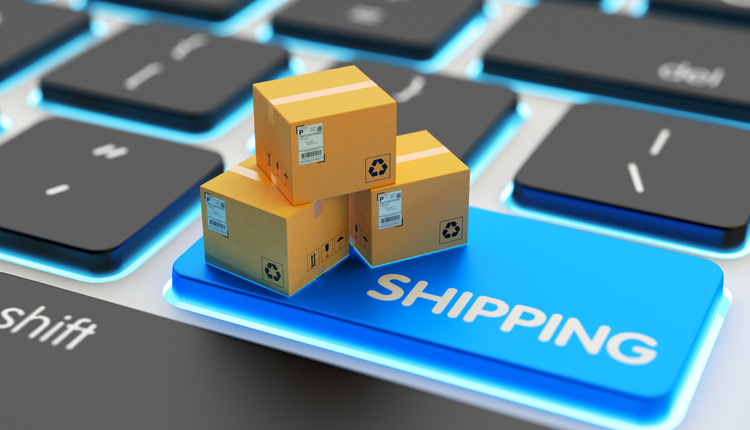Part one of this series looked at how managing inbound parcels has become a growing challenge for organizations of all sizes. This challenge comes from the dramatic increase in the volume of inbound parcels brought about by the growth of both e-commerce and employee purchases delivered to work addresses. In addition, regulatory compliance has dialed up the responsibility organizations take on for specific kinds of shipments, such as medical records and financial and legal documents.
Part two covered the range of inbound parcel management solutions that are being designed to address these challenges. These systems are built around flexible software that speeds up the inbound parcel process by linking it to a wide range of tools including: handheld scanners and signature pads; wireless scanners and belt printers; barcode and label printers; PCs; and smartphones and tablets running Android or iOS operating systems. Some software even works with cellular devices that can track packages (and people) in motion. Solutions can be deployed either on your servers, or hosted remotely, or as a cloud-based software as a service (SaaS).
This brings us to part three, where we'll explore the growing expectations of consumers and businesses with respect to inbound shipping.
Technology Benefits
By connecting your inbound parcel process to so many of your other processes, this new inbound package management technology is delivering impressive benefits. Thanks to handheld and belt devices, packages are handled quickly and efficiently. Systems use the returned merchandise authorization (RMA) number flow through other systems, triggering data transfer back to host systems and making your whole operation more productive. And returns are just one part. You can also automate reconciling purchase order numbers, sending data back to the host system in an efficient, closed loop process. And the whole process is more accurate than the old manual approach that used logbooks, pencil, and paper.
The latest inbound parcel management systems also document the chain of custody, as an inbound parcel travels through your organization. This is a key benefit for legal firms and crucial to regulatory compliance for healthcare and financial organizations. Detailed, reliable tracking is also important to protect your organization’s liability for a parcel between its receipt and final delivery to the recipient.
The Sky’s the Limit
But guess what. The benefits of these inbound management systems can extend way beyond parcels. Yes, they are great for RMA and PO reconciliation, for establishing the chain of custody and for reducing liability risks. However, if you open your mind — think outside the box, if you will— you will soon see the sky is the limit for how this technology can benefit your organization. Start by looking at these systems not as inbound parcel management but as inbound receiving and tracking solutions. Using the cloud-based SaaS approach, you can now get real time visibility in the cloud for almost anything that is moving inside your organization.
Let’s look at some of the ways this is working. Because of the new technology’s receiving and tracking capability, parcel management systems now offer very useful asset management capabilities. We know of a small hospital who was having a problem losing IV pumps. On average, 10 of these pumps went missing each year. Each one costs $400 to replace (which explains why they were disappearing), and that $4,000 annual expense was a significant loss of revenue for this smaller institution.
An asset management system provided the solution. Now when the hospital receives a new IV pump, they give it a bar coded metal tag and sign it out to its intended location, such as supply storage, Interventional Radiology, or Emergency Room. If the pump is moved, the system knows wherever it goes. The best systems can scan any bar code, including 1D and 2D (used by FedEx), as well as any proprietary codes.
This asset management capability is especially useful to schools who provide students with laptops and tablet computers. Asset tags on the equipment allow the system to record when it has been signed out and brought back, and to note the condition on return, so any damage can be charged to the user or put in as an insurance claim. This type of system can provide substantial benefits to any organization that wants to do a better job monitoring and controlling equipment loss.
Keeping Up With Students, Visitors, And Contraband
Parcel management technology is helping schools manage student tardiness and absenteeism. Bar coded IDs allow the system to make note of students who are late, and then inform teachers whether or not they have been properly checked in.
Tracking solutions are also making it easier for businesses to keep track of visitors at their facilities. These systems can photograph visitors and generate a barcoded ID. In an emergency, this makes it easy for security staff to identify who is in the building and locate where they may be. Visitor information is kept in an app that provides staff with a complete history of the visitor and an easy way to confirm their identities.
One of the most interesting applications of inbound parcel management technology can be found in the prison system. Here, solutions have been designed to prevent contraband from coming in through falsified attorney-client communications. To control contraband, prison authorities normally open incoming parcels and mail pieces before they reach the recipient. However, because of the attorney-client privilege, parcels and mail pieces with a lawyer’s return address can only be opened and checked if suspicious and must be done in the presence of the inmate recipient.
Prisons typically do not have sufficient staff to do this. Prison mail centers often process hundreds of deliveries each day. This ever-increasing number of parcels to process and investigate often puts a strain on manual processes. With a higher number of lost or misdirected deliveries, there is greater potential for contraband slipping in through imitation attorney mail.
There are now inbound parcel management systems that can readily answer this challenge. These solutions create a series of barcoded labels, which are distributed to every attorney with a client in the facility. Each lawyer gets a different number and related barcode that cannot be duplicated. This verifies the authenticity of incoming attorney mail, gives more visibility into who is engaging in foul play, and maintains compliance with the attorney-client privilege. Interestingly, while reducing contraband, this inbound parcel technology increases efficiency and productivity, so inmates are getting the benefit of quicker deliveries.
Conclusion
Inbound tracking solutions are now managing a lot more than inbound parcels and mail pieces. They are giving organizations unprecedented end-to-end visibility into the assets of the organization by affixing a simple barcode onto those assets. In addition to parcels and mail pieces, that includes: assets that are mobile or can be readily moved; people working at or visiting your facilities; and items whose authenticity must be verified.
The technology is here. The solutions can integrate with other systems and processes within your operation. There is clearly a need for the benefits such systems provide.
So while you are dialing up your inbound parcel management, consider leveraging that same technology to better manage assets and people, as well as monitor your most critical communications.
Tom Hazel is North American Channel Director, Pitney Bowes Shipping Solutions, where he is responsible for managing the Distribution Solutions & Carrier Management product portfolio for the United States and Canadian field organizations and Inside Sales Channels.












